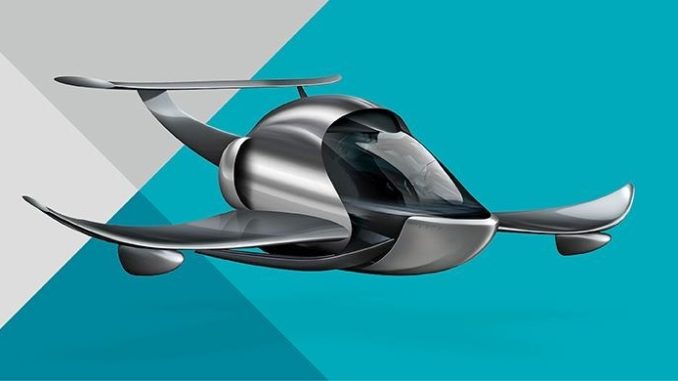
London based innovation company, Exclin Ltd has today announced that it plans to offer a “Wing in Ground Effect” or “WIG” based recreational vehicle known as Vertex.
The next-generation, fuel-efficient vehicle concept will offer pilots an exhilarating, low-altitude flight over the sea by flying just a few metres above the surface.
The vehicle will be based on the patented, award-winning Vertex Lift System technology, the vehicle will also allow vertical take-off and the ability to explore far-flung island locations far beyond the range of a speedboat.
The Vertex Lift System takes conventional WIG technology and adds “lift thrust”, providing control and stability independent of vehicle speed.
The technology solves a key challenge faced by conventional WIG vehicles, potentially opening up a new product class.
The “lift thrust” technology also means the vehicle can take off vertically from a ground surface – offering a thrill to the pilot and a spectacle to observers –while still offering the flexibility of conventional take-off and landing on ground or water.
Vertex Lift System technology was a Golden Bridge Awards Gold Winner at Energy Industry Innovations in the US in 2017 – and the vehicle was shortlisted for the British Engineering Excellence Awards in the same year.
Exclin has been recognised as a Top 500 deep-tech startup in the Hello Tomorrow Challenge 2017, and selected as a semi-finalist in the 2018 European Startup prize for mobility.
Designed for recreational pilots
The Vertex vehicle will offer pilots the sheer pleasure of flying a high-speed craft within metres of the water’s surface – offering high levels of comfort relative to a speedboat.
The high speed of the craft – up to 150kph – means it can reach locations further afield than most boats, such as islands and distant coves.
The Vertex vehicle will be easy to fly and require limited training compared to an aircraft – giving it a low “barrier to entry” for pilots.
This lower bar could also make the craft suitable for luxury seaside hotels or resort villas in regions such as the Bahamas, Fiji, Greece and the Maldives.
To meet the specific needs of recreational pilots, it will be possible to separate the main wing from the body, in order to tow the Vertex Recreational Vehicle with a car.
Classified as a “WIG type B” maritime vehicle, the Vertex Recreational Vehicle will be competitive to fly, operate and own.
A step forward for WIG safety
Because of the Vertex Lift System, the Vertex Recreational Vehicle will represent a step forward for WIG vehicle safety – overcoming barriers to developing this product class.
When the vehicle is in ground-effect mode – flying a few metres from the water surface – the lift system is designed to respond dynamically to changes in conditions such as gusts of wind, to give the vehicle extra stability and control.
In addition, the vehicle will have the ability to operate in free flight, up to the maximum altitude of 150 metres allowed for a WIG type B vehicle. Although this will not be as fuel-efficient, it means the vehicle can be operated safely in harsh conditions, such as rough seas.
Engineering a sea change for high-speed freight
In future, Vertex Lift System technology could revolutionise freight transport in maritime locations – enabling a combination of speed and efficiency that fills a gap in the value chain.
Because of their range and speed, Vertex vehicles will be well placed to take advantage of the trend toward faster, point-to-point high-speed connections as an alternative to congested, hub-specific travel routes.
They could also operate in destinations that are out of reach of boats, such as beaches and hangars – and can fly over frozen waters or via Arctic routes.
Compared to boats, Vertex vehicles would also be able to operate for a longer period of the year – making them more reliable for the needs of high-speed freight.

